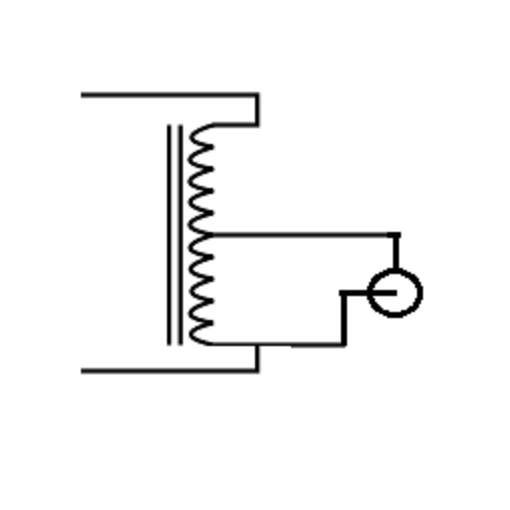Introduction
Antenna systems are often essential components of modern communication networks, enabling the transmission and reception of signals for various applications, including television, radio, and wireless communication. To optimize the performance of these systems, it’s often necessary to use antenna baluns or further limit common mode current with a choke balun. In this article, we will explore why antenna baluns are sometimes needed, how they work, and the benefits they offer. Considerations are also shared for when a balun is not needed.
Understanding Antenna Baluns
An antenna balun, short for “balanced-to-unbalanced,” is a device designed to convert the balanced impedance of an antenna to the unbalanced impedance of a coaxial cable or transmission line. These devices are often crucial when connecting antennas that are balanced, such as dipole antennas, to unbalanced transmission lines, typically coaxial cables. The primary purpose of a balun is to prevent signal loss and ensure the efficient transfer of electromagnetic energy from the antenna to the transmission line.
Why Antenna Baluns Are Often Needed
- Impedance Matching: Antennas like dipoles are inherently balanced, meaning they have equal but opposite electrical currents on each side. In contrast, coaxial cables are unbalanced, with one conductor surrounded by a shield. Without a balun, there is an impedance mismatch when connecting a balanced antenna to an unbalanced transmission line. This mismatch can result in poor signal transmission, signal degradation, and loss of signal power.
- Signal Reflection: When a balanced antenna is directly connected to an unbalanced transmission line, a portion of the signal can reflect back towards the antenna, causing interference and signal distortion. This can result in reduced signal strength and overall system performance. Antenna baluns help eliminate signal reflection by creating a smooth transition between the balanced and unbalanced components of the system.
- Common Mode Reduction: Baluns also play a crucial role in reducing common mode. Common mode occurs when unwanted radio frequency (RF) signals enter the transmission line through sources like nearby electronic devices or interference from other antennas. Baluns, or ‘common mode chokes’ as they are often called in this instance, help to maintain the integrity of the signal by eliminating common mode currents, ensuring that only the desired signal is transmitted along the coaxial cable.
- Enhancing Signal Quality: In addition to preventing signal loss and interference, antenna baluns can improve the quality of the transmitted signal. By providing a clean, balanced-to-unbalanced transition, baluns help ensure that the signal reaches its destination with minimal distortion and attenuation. This is particularly important for applications like high-definition television and data transmission, where signal integrity is critical.
Why Antenna Baluns Are Sometimes Not Needed
- Balun-Less Antenna Designs: Some antenna designs are inherently unbalanced, which means they do not require baluns when connected to unbalanced transmission lines. One common example is the monopole antenna. Monopoles have a single conductor and use the ground or a ground plane as their counterpoise, and this design doesn’t require a balun when connected to a coaxial cable.
- Coaxial Feeder Lines: Coaxial cables are commonly used as transmission lines for connecting antennas to receivers. Coaxial cables themselves are inherently unbalanced, which can simplify the setup when connecting to unbalanced antennas or antennas that have a matching impedance. In such cases, the balanced-to-unbalanced conversion that a balun provides may be unnecessary, and the coaxial cable can be directly connected to the antenna.
- Balun Alternatives: In some instances, you can achieve the benefits of a balun without using a dedicated balun device. For example, common-mode chokes or ferrite beads can be used to reduce common-mode noise and provide similar protection against signal interference without a traditional balun. These components can be a cost-effective and space-saving alternative when impedance matching is not a concern.
- Receiver Compatibility: Consider the receiver’s input characteristics. Some modern receivers are designed to handle a range of antenna impedances and may not require a balun to function optimally. When using such receivers, you can often simplify your antenna system by connecting the transmission line directly to the receiver’s input.
Types of Antenna Baluns
Antenna baluns come in various types, including:
- 1:1 Balun: A 1:1 balun has an equal number of turns on both sides, providing a straightforward conversion from balanced to unbalanced impedance.
- 4:1 Balun: A 4:1 balun is often used to match a high-impedance antenna to a lower-impedance transmission line, such as connecting a dipole antenna to a coaxial cable.
- Current Balun: Current baluns are designed to handle common-mode currents by equalizing them on the transmission line, preventing common-mode noise.
- Voltage Balun: Voltage baluns are intended to maintain the voltage balance between the antenna and transmission line, improving signal quality.
Conclusion
Antenna baluns are essential components in communication systems, ensuring efficient signal transmission by addressing impedance mismatches, preventing signal reflection, reducing common-mode noise, and enhancing signal quality. To achieve the best performance and signal integrity in your Alpha antenna system, consider the use of appropriate baluns, tailored to your specific application and requirements. Whether for television, radio, or wireless communication, antenna baluns play a crucial role in maintaining a reliable and interference-free signal.
Conversely, while antenna baluns are valuable tools for optimizing signal transmission in many antenna systems, there are scenarios where they are not needed. Understanding the impedance characteristics of your antenna, transmission line, and receiver, as well as the inherent design of the antenna, can help you determine whether a balun is necessary. When an impedance match is already present, when using inherently unbalanced antenna designs, or when alternative methods can achieve the desired results, you can simplify your antenna system by omitting the use of a balun. Careful consideration of your specific setup and requirements will help you determine whether antenna baluns are essential or can be comfortably excluded, streamlining your system and reducing complexity.
See more Technical Articles

